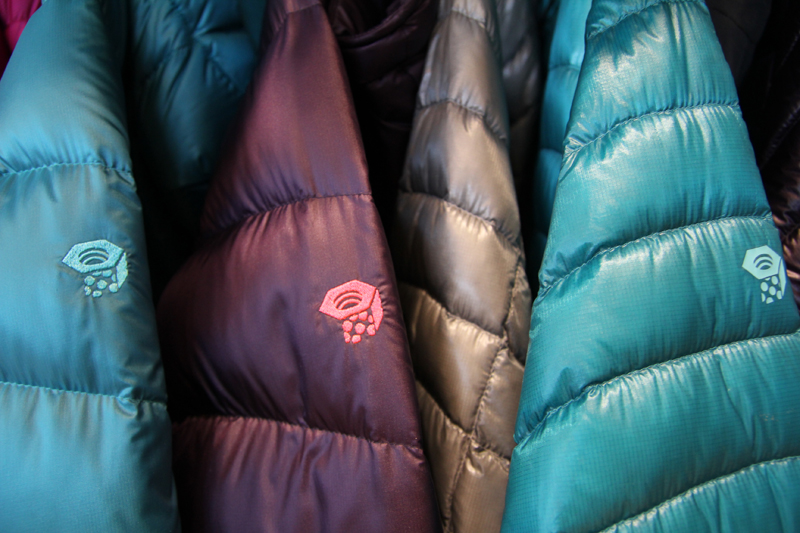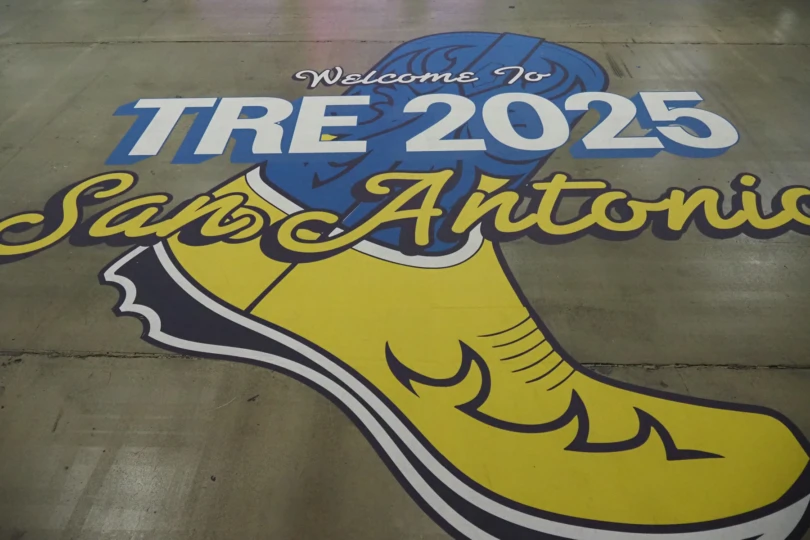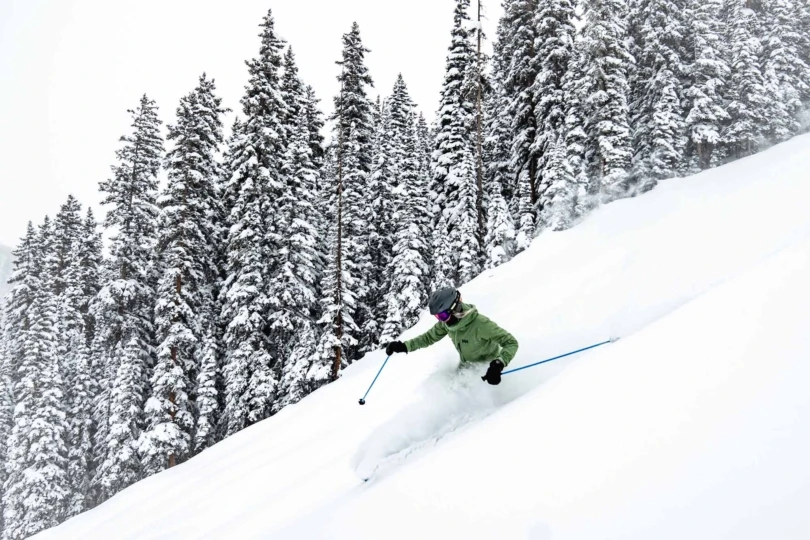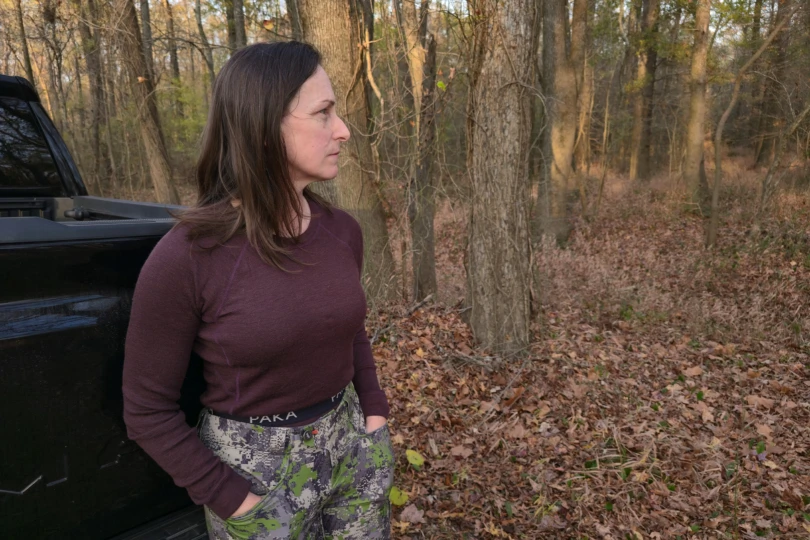
The San Francisco skyline spikes against clouds across the bay. Wind rushes off the water, a blast of salty air on a perfect October afternoon. I am in Richmond, Calif., standing outside an immense brick building that was long ago an assembly plant for the Ford Model A.
Today, the site is managed as a National Historical Park. There’s a welcome center and plaques at points of interest along a sea wall.
But inside the old, blocks-long building, visitors find thriving modern businesses, including one of the best-known outdoor brands in the United States.

Mountain Hardwear Inc. turns 20 years old this week. I came to Richmond and the company’s unique headquarters for an inside look at what makes the brand tick.
A facility tour, an anniversary party, product demos, and a run with Topher Gaylord, Hardwear’s president since 2010, gave a full picture of the brand at this notable milestone.
It started on Halloween in 1993. That marks the day when Mountain Hardwear opened its doors for business. Nine founding members united to build a company focused on outerwear and gear for deep wilderness and high alpine pursuits.
The original team, which included several industry veterans, proved a quick success. Product hit stores in 1994, and soon the Mountain Hardwear logo was visible on tents, sleeping bags, jackets, and high-altitude outerwear around the planet.
At the 10-year mark, Mountain Hardwear was netting around $30million in annual sales. The brand was a staple, if still somewhat niche, player in the outdoor industry when it was acquired by Columbia Sportswear Company in 2003.


In the years since, Mountain Hardwear has grown substantially. Today the company employs more than 100 people in its Richmond headquarters and has workers in satellite offices across Europe and Asia. Its product line includes more than 500 items that are sold in 41 countries.
(See more photos from the Mountain Hardwear headquarters tour on page 2 of this post)
But the company brass that I interviewed, including Topher Gaylord (president), Chris Harges (head of marketing), and Robert Fry (merchandising and design), see a new era coming for the brand.
In recent years, Mountain Hardwear has unveiled a litany of propriety outerwear and apparel technologies, some in partnership with its parent Columbia Sportswear, some alone. As examples, these technologies include Cool.Q ZERO, which is a fabric that feels cooler when it gets wet; Dry.Q Elite, a waterproof-breathable shell membrane; and Wick.Q EVAP, a sweat-wicking fabric.

You’ll see these names on product hang tags and spec sheets going forward for 2013 and 2014 items instead of the more familiar industry brands like Gore-Tex. Indeed, the proprietary technologies are among a suite of 15 house brand “ingredients” Mountain Hardwear now uses on many of its products instead of Gore-Tex, PrimaLoft, Polartec, Pertex, and other mainstay materials.
Harges noted the company decided to differentiate itself from the field in apparel and outerwear. In-house tech accomplished this goal, allowing for more freedom of design, quicker product turnaround, and cost savings for the consumer, Harges said.
Product managers inside the company also cite the proprietary ingredients as being as good or even better than the market standard. For one, Hardwear’s Thermal.Q Elite synthetic insulation, according to Fry, is “the warmest synthetic on the market.”
In a 30-minute talk, he detailed how Thermal.Q Elite insulation tested in a company lab was “35 percent warmer than its closest competitor.” Fry described the billowy goose-down imitation as a “Santa Beard material” that can be inserted into a jacket with no fabric sheet backing, thus saving weight and adding warmth.

I tried on a Thermal.Q Elite jacket inside a showroom at the main office. It got warm immediately, like fine goose down, the jacket kicking back my body heat as if a switch had been flipped.
The company’s Ghost Whisperer Fabric is also unique. The super-fine material used on jackets is touted as “the world’s only true 7 denier by 10 denier fabric” and “so unique there’s only one mill in the world that can weave it.”
Developed with climber Ueli Steck, the thin Ghost Whisperer Fabric is windproof, down-proof (feathers won’t poke through), and water repellent. Fry joked it takes “pixies and spiders in a Japanese mill” to bring the fine filaments together and make the exotic material real.
Santa beards and fabric fairies aside, Mountain Hardwear is now more than anytime in its lifespan fortified with innovations and a range of products for nearly any kind of weather and geography type. Its line has running apparel built for the desert and ultra distances. There’s rainwear, skiwear, and everyday-wear, including hats and plaid shirts. There are backpacks, sleeping bags, and family tents. Montrail, which is run internally at Hardwear, has a full footwear line.
Hardwear remains a core gear-maker in the alpine and climbing space. Its tents, packs, technical shells, sleeping bags, and down suits are expedition mainstays.


Chris Harges said for 2014 and beyond the company will focus on design, aesthetics, and expanding the appeal of its products for wider consumer reach. “We’re looking ahead at ‘Mountain Hardwear 3.0,’” he said.
The new phase for the company will see a push to make Mountain Hardwear a mainstream brand. Harges said consumer values are shifting on a macro level around healthy living, getting outside, being active, and having a balance in life to do it all. He believes all of these things are “in line with the outdoor industry” and thus Mountain Hardwear, too.
That lifestyle is on display at the company’s HQ. Employees bike to work and can check out a sea kayak or SUP board at lunch to paddle on the bay. Dogs roam the open floor plan, where sun streams in from big skylights and artwork on the walls skews toward vistas and action photos blown up large.


The new vision for the company comes with new personnel. There have been several significant hires since Topher Gaylord took control as president in 2010. Overall, an executive told me, about 70 to 80 percent of the Richmond-based staff is new within the past three years.
I went on a lunchtime run with Gaylord along the water. Ultra-running athlete Max King was in the Mountain Hardwear office for the day, and he joined us for the initial couple miles before rocketing off on a solo session.
Gaylord ran a sub-7-minute mile pace himself and kept a conversation going without issue. I asked questions between breaths, trying to keep up. It was a sunny day, and Gaylord gave a tour of the harbor area pointing to sites while also talking about the future of his brand, now 20 years old.
He ran in prototype Montrail shoes, mismatched with one red and one blue. “It’s by design that way,” he said. We turned a corner, the water stretching away. The San Francisco skyline appeared jagged, like a little mountain range, across the bay.
“Almost back,” Gaylord said, pointing ahead. The lunchtime run was winding down, but Gaylord was still smiling, ready to pick up the pace.
—Stephen Regenold is editor and founder of GearJunkie.
(See more photos from the Mountain Hardwear headquarters tour on page 2 of this post)






